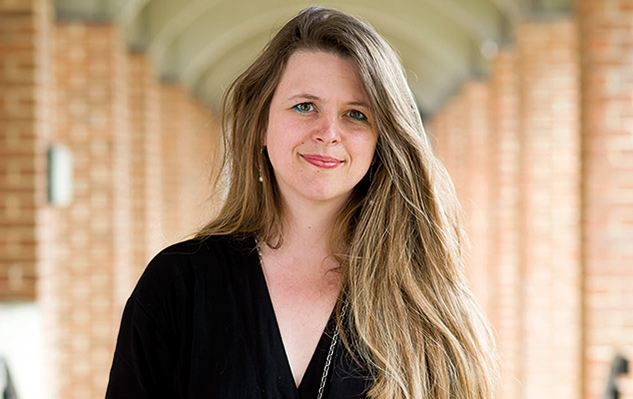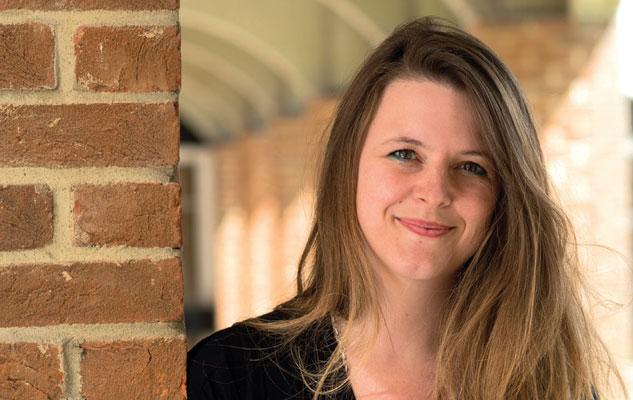Hope Wolf
Hope Wolf is a Lecturer in British Modernist Literature with the School of English at the University of Sussex.

Hope’s research story
What is the significance of Modernism here and now? For Hope Wolf, this is the central question the Sussex Modernism Project aims to explore. Comparing different media, types of Modernism and modernist communities, she hopes to shed new light on what Modernism can offer us today.
As a location for Hope’s research, Sussex is ideal. Many of the leading writers, artists, composers, architects and patrons of British Modernism lived in the county at pivotal points in their lives.
‘It’s a great fit for my research,’ says Hope, ‘because it offers so many key figures and communities for comparison. It’s a place where you can explore the work of surrealists, you’ve got the Bloomsbury Group at Charleston, Eric Gill and David Jones at Ditchling, and you also have the international-style architecture in the seafronts along the coast.’
The University itself is a prime example of Sir Basil Spence’s work, with Rick Mather’s Towner Gallery in Eastbourne and Loftus and Grieve’s Jerwood Gallery in Hastings the latest additions to modernist public architecture in Sussex.
It’s about starting a conversation not knowing where it’s going to lead, having your own perceptions challenged and challenging other people’s. There’s a kind of alchemy that happens as part of that conversation.” Hope Wolf
Lecturer in British Modernist Literature
Collaborating with curators and archivists in the region – Charleston, Towner Gallery, Ditchling Museum of Art + Craft, Jerwood Gallery, Farleys House and Gallery, Brighton Museum & Art Gallery, Pallant House Gallery and West Dean – to showcase their collections, Hope is creating a narrative that connects the collections and enables new understandings of the relevance of Modernism to our lives now.
‘For modernist communities,’ argues Hope, ‘experimental artistic and literary practice wasn’t separate from the ways they lived their lives.’ Some of the modernists she is studying experimented with alternative ways of living. ‘That message is important for people today,’ she says. ‘It’s almost as if we need a set of alternatives where we perhaps feel frustrated with contemporary society. The Sussex Modernism Project can show the relevance of art to us all.’

Another great benefit of the research is that it’s getting people across Sussex more excited about where they live.
‘Through public talks at the Towner, the De La Warr Pavilion, Ditchling Museum of Art + Craft and Pallant House Gallery, we’re getting people to look at modernist sites and collections more closely. We’re engaging with groups of people who are interested in Sussex Modernism and giving them a much richer understanding of the area, but we’re also learning a huge amount from them.
‘It’s great to hear how they feel about living near sites such as the De La Warr Pavilion or the murals painted by the Bloomsbury artists at Berwick Church. We also get to hear their insights about modernist work we may not have given enough thought to previously or simply don’t know about.’
For Hope, research should always be a dialogue. ‘It’s about starting a conversation not knowing where it’s going to lead, having your own perceptions challenged and challenging other people’s. There’s a kind of alchemy that happens as part of that conversation.’
Find out more about Hope’s research.